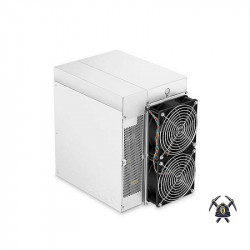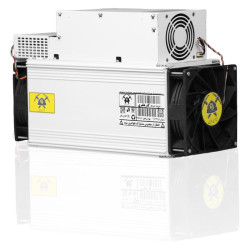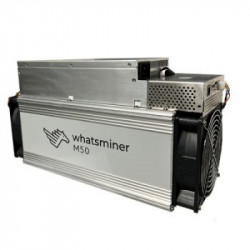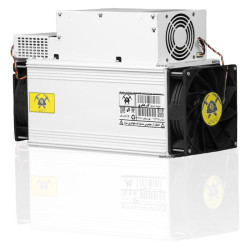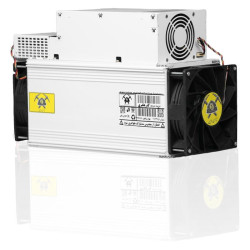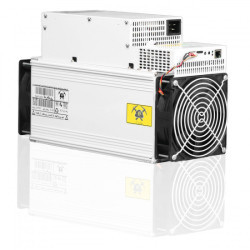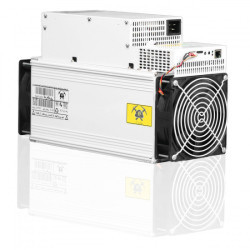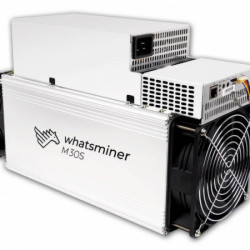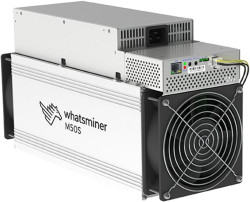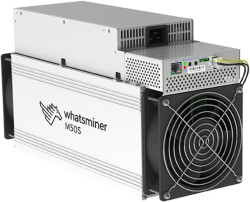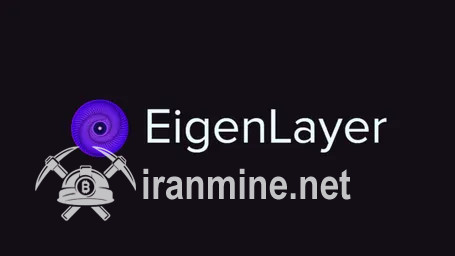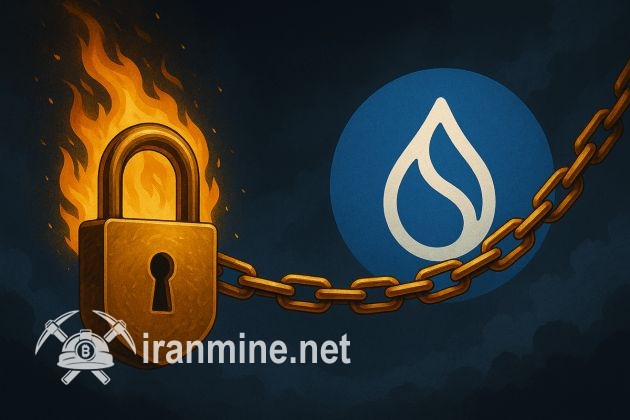عوامل مؤثر در تعیین درآمد ماینرها


مقدمه:
استخراج crypto currency (ارزهای دیجیتال) یا ماینینگ به عنوان یکی از روشهای کسب و کار در دنیای دیجیتال به سرعت رشد کرده است. ماینر ها، افراد یا شرکت هایی هستند که از توانایی محاسباتی خود برای تأیید تراکنش ها و ایجاد بلاک ها در شبکه های بلاک چین استفاده میکنند. این فعالیت به ماینرها امکان میدهد کریپتوارزهایی مانند بیتکوین، اتریوم و دیگر ارزهای دیجیتال را تولید کنند و به عنوان پاداش، ارزهای دیجیتال و هزینههای تراکنش دریافت کنند. در این مقاله، به بررسی عوامل مؤثر در تعیین درآمد ماینرها خواهیم پرداخت.
1. قدرت محاسباتی (Hashrate):
قدرت محاسباتی یا هشریت ماینر یکی از عوامل اساسی در تعیین درآمد ماینرها است. هشریت نشاندهنده توانایی ماینر در حل مسائل ریاضی پیچیده به منظور تأیید تراکنشها و افزودن بلاکها به شبکه است. هرچه هشریت بیشتری داشته باشد، ماینر بیشتری احتمالاً به عنوان اولین شخص بلاک را ایجاد خواهد کرد و پاداش بلاک را دریافت میکند.
2. دشواری شبکه (Network Difficulty):
دشواری شبکه به میزان پیچیدگی مسائل ریاضی در شبکه بلاکچین مربوط است. هر چه دشواری شبکه بیشتر باشد، ماین کردن بلاکها دشوارتر میشود و نیاز به قدرت محاسباتی بیشتری دارید. این ممکن است منجر به کاهش درآمد ماینرها شود.
3. پاداش بلاک (Block Reward):
ماینرها به عنوان پاداش برای حل مسائل ریاضی و تأیید تراکنشها پاداشی دریافت میکنند. این پاداش از دو بخش تشکیل شده است: پاداش بلاک و هزینه تراکنش. ارزش بیتکوین یا دیگر کریپتوارزها و نرخ تراکنشها تأثیر زیادی بر ارزش پاداش دارند.
4. هزینه برق (Electricity Costs):
ماین کردن کریپتوارزها نیاز به تجهیزات محاسباتی پرقدرت دارد که انرژی زیادی مصرف میکنند. هزینه برق در نهایت تأثیر بسزایی بر سودآوری ماینرها دارد. مکان ماینینگ (به عنوان مثال، مناطق با هزینه برق پایین) میتواند دراین خصوص تأثیرگذار باشد.
5. هزینه تجهیزات و نگهداری (Equipment and Maintenance Costs):
خرید تجهیزات ماینینگ و هزینههای نگهداری و تعمیرات آنها نیز به درآمد ماینرها افزوده میشود. تجهیزات جدیدتر و پیشرفتهتر ممکن است بهبود سودآوری را ارائه دهند، اما هزینههای تهیه و نگهداری آنها نیز بالا خواهد رفت.
6. نوع تجهیزات ماینینگ (Mining Hardware):
نوع تجهیزات ماینینگی که برای ماینینگ استفاده میشود نیز تأثیرگذار است. تجهیزات جدیدتر و کارآمدتر ممکن است در مقایسه با تجهیزات قدیمیتر درآمد بیشتری را فراهم کنند.
7. همکاری در استخرهای ماینینگ (Mining Pools):
بسیاری از ماینرها به صورت گروهی در استخرهای ماینینگ مشارکت میکنند. این استخرها از ماینرها جمعآوری میکنند و با همکاری برای حل مسائل ریاضی و تأیید تراکنشها به بلاکها اضافه میکنند. پاداش بلاک سپس بین اعضای استخر به اسهام آنها تقسیم میشود.
8. نوع کریپتوکارنسی (Cryptocurrency Type):
نوع کریپتوارزی که استخراج میشود نیز تأثیرگذار است. بعضی از کریپتوارزها پاداش بلاک بیشتری ارائه میدهند و برای ماینرها جذابتر هستند.
9. تغییرات در پروتکل (Protocol Changes):
تغییرات در پروتکل کریپتوارز یا تصمیمات اعمال شده توسط فراهمآورندگان شبکه ممکن است درآمد ماینرها را تحت تأثیر قرار دهند. تغییراتی مانند کاهش پاداش بلاک یا تغییرات در الگوریتمهای ماینینگ میتوانند تأثیرات مختلفی بر درآمد داشته باشند.
10. مسائل قانونی و مالی (Legal and Regulatory Issues):
مسائل مربوط به قوانین و مقررات مالیاتی نیز میتوانند درآمد ماینرها را تحت تأثیر قرار دهند. قوانین و مقررات مربوط به ماینینگ در مناطق مختلف متفاوت است و باید به دقت پیروی شوند.

نتیجهگیری:
در کل، درآمد ماینرها به ترکیبی پیچیده از عوامل بستگی دارد که به توانایی ماینرها در تصمیمگیری، مدیریت ریسک، تجربه، و تحقیقات آنها بستگی دارد. باید توجه داشت که ماینینگ یک فعالیت پویا و ریسکآمیز است و برای موفقیت در آن نیاز به توجه مداوم به تغییرات بازار و بهروز بودن با تکنولوژی دارید.
علاوه بر این، بهتر است تصمیمات مدیریتی مناسبی برای بهرهوری از تواناییهای محاسباتی و مالی خود اتخاذ کنید. همچنین، همکاری در استخرهای ماینینگ و مشارکت در جوامع مرتبط با کریپتوارز میتواند به بهبود درآمد کمک کند
بخش انگلیسی
Factors Affecting Miners' Income
Introduction:
Cryptocurrency mining, or "mining," has rapidly grown as a business venture in the digital world. Miners, whether individuals or companies, utilize their computational power to validate transactions and create blocks on blockchain networks. This activity allows miners to generate cryptocurrencies such as Bitcoin, Ethereum, and other digital assets and receive rewards in the form of digital currency and transaction fees. In this article, we will examine the factors that influence miners' income.
1. Computational Power (Hashrate):
Computational power, or hashrate, is a fundamental factor in determining miners' income. Hashrate reflects a miner's ability to solve complex mathematical problems to validate transactions and add blocks to the blockchain. The higher the hashrate, the more likely a miner is to be the first to create a block and receive block rewards.
2. Network Difficulty:
Network difficulty relates to the complexity of mathematical problems within the blockchain network. Higher network difficulty makes block mining more challenging, requiring greater computational power. This can lead to a reduction in miners' income.
3. Block Reward:
Miners receive rewards for solving mathematical problems and validating transactions. Block rewards consist of two components: the block reward itself and transaction fees. The value of cryptocurrencies like Bitcoin and the transaction fee rates have a significant impact on the total block reward.
4. Electricity Costs:
Mining cryptocurrencies requires powerful computational equipment that consumes a considerable amount of energy. Electricity costs ultimately affect miners' profitability. The location of mining operations, such as areas with lower electricity costs, can be influential in this regard.
5. Equipment and Maintenance Costs:
The purchase of mining equipment and associated maintenance and repair expenses add to miners' costs. More advanced and efficient equipment may improve profitability, but it comes with higher acquisition and maintenance costs.
6. Type of Mining Hardware:
The type of mining hardware used for mining also plays a role. More recent and efficient hardware may offer greater income potential compared to older equipment.
7. Participation in Mining Pools:
Many miners participate in mining pools, where they collectively contribute computational power to solve mathematical problems and validate transactions, and the block reward is distributed among pool members based on their contributions.
8. Cryptocurrency Type:
The type of cryptocurrency being mined is another influencing factor. Some cryptocurrencies offer higher block rewards and are more attractive to miners.
9. Protocol Changes:
Changes in cryptocurrency protocols or decisions made by network providers can impact miners' income. Changes such as reducing block rewards or altering mining algorithms can have various effects on income.
10. Legal and Regulatory Issues:
Legal and regulatory matters can also affect miners' income. Mining regulations and tax regulations vary in different regions and must be carefully followed.
Conclusion:
In summary, miners' income depends on a complex combination of factors that rely on miners' decision-making, risk management, experience, and research. It should be noted that mining is a dynamic and risky activity, and success requires continuous attention to market changes and staying updated with technology.
Additionally, making prudent management decisions to leverage computational and financial capabilities is crucial. Collaboration within mining pools and participation in cryptocurrency communities can also contribute to improving income.
بخش چینی
影响矿工收入的因素
简介:
加密货币挖矿或“挖矿”已经在数字世界中迅速发展为一项商业活动。矿工,无论是个人还是公司,都利用其计算能力来验证交易并在区块链网络上创建区块。这项活动使矿工能够生成比特币、以太坊和其他数字资产等加密货币,并以数字货币和交易费的形式获得奖励。在本文中,我们将探讨影响矿工收入的因素。
1. 计算能力(哈希率):
计算能力或哈希率是确定矿工收入的基本因素。哈希率反映了矿工解决复杂数学问题以验证交易并将区块添加到区块链的能力。哈希率越高,矿工越有可能成为第一个创建区块并获得区块奖励的人。
2. 网络难度:
网络难度与区块链网络内数学问题的复杂性有关。更高的网络难度使区块挖掘变得更具挑战性,需要更大的计算能力。这可能会导致矿工收入减少。
3. 区块奖励:
矿工解决数学问题并验证交易以获得奖励。区块奖励包括两个组成部分:区块奖励本身和交易费。比特币等加密货币的价值和交易费率对总区块奖励产生重要影响。
4. 电力成本:
挖矿加密货币需要强大的计算设备,这些设备消耗大量电能。电力成本最终影响矿工的盈利能力。挖矿操作的位置,例如电费较低的地区,可能在这方面具有影响力。
5. 设备和维护成本:
购买挖矿设备以及相关维护和维修费用都会增加矿工的成本。更先进和高效的设备可能会提高盈利能力,但会带来更高的购置和维护成本。
6. 挖矿硬件类型:
用于挖矿的硬件类型也起到一定作用。较新和更高效的硬件可能相对于旧设备具有更高的收入潜力。
7. 参与矿池:
许多矿工参与矿池,他们共同提供计算能力来解决数学问题和验证交易,区块奖励将根据他们的贡献分配给矿池成员。
8. 加密货币类型:
正在挖掘的加密货币类型是另一个影响因素。一些加密货币提供较高的区块奖励,对矿工更具吸引力。
9. 协议变更:
加密货币协议的变更或网络提供者的决策也可能影响矿工的收入。诸如减少区块奖励或更改挖矿算法等变更可能会对收入产生各种影响。
10. 法律和监管问题:
法律和监管事项也可能影响矿工的收入。不同地区的挖矿法规和税收法规各不相同,必须仔细遵守。
结论:
总之,矿工的收入取决于一系列复杂的因素,这些因素依赖于矿工的决策、风险管理、经验和研究。应注意,挖矿是一项动态且充满风险的活动,成功需要不断关注市场变化并与技术保持更新。
此外,明智的管理决策以充分利用计算和财务能力至关重要。在矿池内合作并参与加密货币社区也有助于提高收入。
بخش هندی
माइनर्स की आय को प्रभावित करने वाले कारक
परिचय:
क्रिप्टोकरेंसी माइनिंग, या "माइनिंग", एक डिजिटल दुनिया में व्यापारिक उपाय के रूप में तेजी से बढ़ गई है। माइनर्स, चाहे वे व्यक्तियों हों या कंपनियों हों, अपनी गणना शक्ति का उपयोग ट्रांजैक्शनों को सत्यापित करने और ब्लॉक बनाने के लिए करते हैं। इस गतिविधि के माध्यम से माइनर्स क्रिप्टोकरेंसी जैसे बिटकॉइन, ईथेरियम, और अन्य डिजिटल धन को उत्पन्न करने की सुविधा प्राप्त करते हैं और डिजिटल मुद्रा और ट्रांजैक्शन शुल्क के रूप में पुरस्कार प्राप्त करते हैं। इस लेख में, हम माइनर्स की आय को प्रभावित करने वाले कारकों की जाँच करेंगे।
1. गणना शक्ति (हैशरेट):
गणना शक्ति, या हैशरेट, माइनर्स की आय को निर्धारित करने के लिए मौलिक कारक है। हैशरेट से प्रकट होता है कि माइनर ट्रांजैक्शनों को सत्यापित करने और ब्लॉक बनाने के लिए जटिल गणितीय समस्याओं को हल करने की क्षमता रखता है। हैशरेट जितना अधिक होगा, उतने ही अधिक संभावना है कि माइनर पहले ब्लॉक बनाएंगे और ब्लॉक पुरस्कार प्राप्त करेंगे।
2. नेटवर्क कठिनाई (नेटवर्क कठिनाई):
नेटवर्क कठिनाई संबंधित है ब्लॉकचेन नेटवर्क में गणितीय समस्याओं की जटिलता से। ज्यादा नेटवर्क कठिनाई ब्लॉक माइनिंग को और भी चुनौतीपूर्ण बनाता है, जो अधिक गणना शक्ति की आवश्यकता करता है। इससे माइनर्स की आय कम हो सकती है।
3. ब्लॉक पुरस्कार:
माइनर्स को गणितीय समस्याओं को हल करने और ट्रांजैक्शनों की सत्यापन के लिए पुरस्कार मिलता है। ब्लॉक पुरस्कार में दो घटक होते हैं: ब्लॉक पुरस्कार और ट्रांजैक्शन शुल्क। बिटकॉइन और अन्य क्रिप्टोकरेंसी की मूल्य और ट्रांजैक्शन शुल्क दरें कुल पुरस्कार पर महत्वपूर्ण प्रभाव डालती हैं।
4. विद्युत लागत (विद्युत लागत):
क्रिप्टोकरेंसी के खनन के लिए शक्तिशाली गणना उपकरण की आवश्यकता है, जो बहुत अधिक ऊर्जा का उपयोग करते हैं। विद्युत लागत आखिरकार माइनर्स की लाभकारिता पर प्रभाव डालती है। खनन क्रियाकलाप के स्थान, जैसे कि कम विद्युत लागत वाले क्षेत्र, इस प्रकार में प्रभावकारी हो सकते हैं।
5. उपकरण और रखरखाव लागत (उपकरण और रखरखाव लागत):
माइनिंग उपकरण की खरीददारी और संबंधित रखरखाव और मरम्मत लागत माइनर्स के लागत में जोड़ते हैं। अधिक प्रगतिशील और अधिक प्रभावी उपकरण लाभकारिता में सुधार कर सकते हैं, लेकिन यह उनके खरीददारी और रखरखाव लागत के साथ आता है।
6. माइनिंग हार्डवेयर का प्रकार (माइनिंग हार्डवेयर):
माइनिंग के लिए उपयोग किए जाने वाले हार्डवेयर का प्रकार भी एक भूमिका निभाता है। नए और उन्नत हार्डवेयर पुरस्कार को पुराने हार्डवेयर की तुलना में अधिक आय की संभावना प्रदान कर सकते हैं।
7. माइनिंग पूल्स में भागीदारी (माइनिंग पूल्स):
कई माइनर्स माइनिंग पूल्स में भाग लेते हैं, जहां वे संयुक्त रूप से गणना शक्ति योगदान करते हैं ताकि वे गणितीय समस्याओं को हल कर सकें और ट्रांजैक्शनों की पुष्टि कर सकें, और ब्लॉक पुरस्कार को उनके योगदानों के आधार पर बाँटा जाता है।
8. क्रिप्टोकरेंसी का प्रकार (क्रिप्टोकरेंसी प्रकार):
माइनिंग किए जाने वाले क्रिप्टोकरेंसी का प्रकार भी प्रभावकारी है। कुछ क्रिप्टोकरेंसी अधिक ब्लॉक पुरस्कार प्रदान करती हैं और माइनर्स के लिए अधिक आकर्षक होती हैं।
9. प्रोटोकॉल बदलते हैं (प्रोटोकॉल बदलते हैं):
क्रिप्टोकरेंसी प्रोटोकॉल में परिवर्तन या नेटवर्क प्रदाताओं के फैसले माइनर्स की आय पर प्रभाव डाल सकते हैं। परिवर्तन जैसे कि ब्लॉक पुरस्कार कम करने या माइनिंग एल्गोरिदम बदलने के बदले में, आय पर विभिन्न प्रभाव हो सकते हैं।
10. कानूनी और नियामकी मुद्दे (कानूनी और नियामकी मुद्दे):
कानूनी और नियामकी मामले भी माइनर्स की आय पर प्रभाव डाल सकते हैं। माइनिंग विधियों और कर विधियों के विभिन्न क्षेत्रों में अलग-अलग होते हैं और ध्यान से पालन किए जाने चाहिए।
निष्कर्षण:
संक्षेप में, माइनर्स की आय का संघटित संघटित फैक्टर्स का संघटित मिश्रण पर निर्भर करता है, जो माइनर्स के निर्णय लेने, जोखिम प्रबंधन, अनुभव, और अनुसंधान पर निर्भर करता है। यह ध्यान देना चाहिए कि माइनिंग एक गतिशील और जोखिमपूर्ण गतिविधि है, और सफलता के लिए बाजार परिवर्तनों और प्रौद्योगिकी में अद्यतित रहने के लिए निरंतर ध्यान देने की आवश्यकता है।
इसके अलावा, गणना और वित्तीय क्षमताओं का उपयोग करने के लिए समझदार प्रबंधन निर्णय लेना महत्वपूर्ण है। माइनिंग पूल्स के अंदर सहयोग और क्रिप्टोकरेंसी समुदायों में भागीदारी भी आय में सुधार करने में मदद कर सकती है।
بخش اسپانیایی
Factores que afectan los ingresos de los mineros
Introducción:
La minería de criptomonedas, o "mining", ha crecido rápidamente como una empresa en el mundo digital. Los mineros, ya sean individuos o empresas, utilizan su poder computacional para validar transacciones y crear bloques en redes blockchain. Esta actividad les permite generar criptomonedas como Bitcoin, Ethereum y otros activos digitales y recibir recompensas en forma de moneda digital y tarifas de transacción. En este artículo, examinaremos los factores que influyen en los ingresos de los mineros.
1. Potencia computacional (Hashrate):
La potencia computacional, o hashrate, es un factor fundamental para determinar los ingresos de los mineros. El hashrate refleja la capacidad de un minero para resolver problemas matemáticos complejos para validar transacciones y agregar bloques a la cadena de bloques. Cuanto mayor sea el hashrate, mayor será la probabilidad de que un minero sea el primero en crear un bloque y recibir recompensas por ello.
2. Dificultad de la red (Network Difficulty):
La dificultad de la red se relaciona con la complejidad de los problemas matemáticos en la red blockchain. Una mayor dificultad de red hace que la minería de bloques sea más desafiante, requiriendo una mayor potencia computacional. Esto puede llevar a una reducción en los ingresos de los mineros.
3. Recompensa por bloque (Block Reward):
Los mineros reciben recompensas por resolver problemas matemáticos y validar transacciones. Las recompensas por bloque constan de dos componentes: la recompensa por bloque en sí y las tarifas de transacción. El valor de criptomonedas como Bitcoin y las tasas de tarifas de transacción tienen un impacto significativo en la recompensa total por bloque.
4. Costos de electricidad (Electricity Costs):
La minería de criptomonedas requiere equipos computacionales potentes que consumen una cantidad considerable de energía. Los costos de electricidad afectan en última instancia a la rentabilidad de los mineros. La ubicación de las operaciones mineras, como áreas con costos de electricidad más bajos, puede ser influyente en este sentido.
5. Costos de equipo y mantenimiento (Equipment and Maintenance Costs):
La compra de equipos de minería y los gastos asociados de mantenimiento y reparación se suman a los costos de los mineros. Equipos más avanzados y eficientes pueden mejorar la rentabilidad, pero vienen con costos más altos de adquisición y mantenimiento.
6. Tipo de hardware de minería (Mining Hardware Type):
El tipo de hardware de minería utilizado también juega un papel. El hardware más reciente y eficiente puede ofrecer un mayor potencial de ingresos en comparación con equipos más antiguos.
7. Participación en grupos de minería (Participation in Mining Pools):
Muchos mineros participan en grupos de minería, donde contribuyen colectivamente con potencia computacional para resolver problemas matemáticos y validar transacciones, y la recompensa por bloque se distribuye entre los miembros del grupo en función de sus contribuciones.
8. Tipo de criptomoneda:
El tipo de criptomoneda que se está minando es otro factor influyente. Algunas criptomonedas ofrecen recompensas por bloque más altas y son más atractivas para los mineros.
9. Cambios en el protocolo (Protocol Changes):
Los cambios en los protocolos de criptomonedas o decisiones tomadas por los proveedores de red pueden afectar los ingresos de los mineros. Cambios como la reducción de las recompensas por bloque o la modificación de los algoritmos de minería pueden tener varios efectos en los ingresos.
10. Asuntos legales y regulatorios (Legal and Regulatory Issues):
Los asuntos legales y regulatorios también pueden afectar los ingresos de los mineros. Las regulaciones mineras y fiscales varían en diferentes regiones y deben ser seguidas cuidadosamente.
Conclusión:
En resumen, los ingresos de los mineros dependen de una combinación compleja de factores que se basan en la toma de decisiones de los mineros, la gestión del riesgo, la experiencia y la investigación. Debe tenerse en cuenta que la minería es una actividad dinámica y arriesgada, y el éxito requiere una atención constante a los cambios en el mercado y mantenerse actualizado con la tecnología.
Además, tomar decisiones de gestión prudentes para aprovechar las capacidades computacionales y financieras es crucial. La colaboración en grupos de minería y la participación en comunidades de criptomonedas también pueden contribuir a mejorar los ingresos
